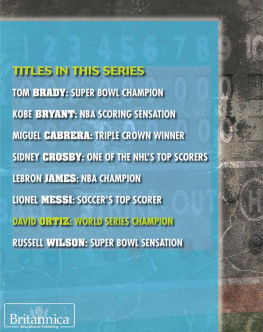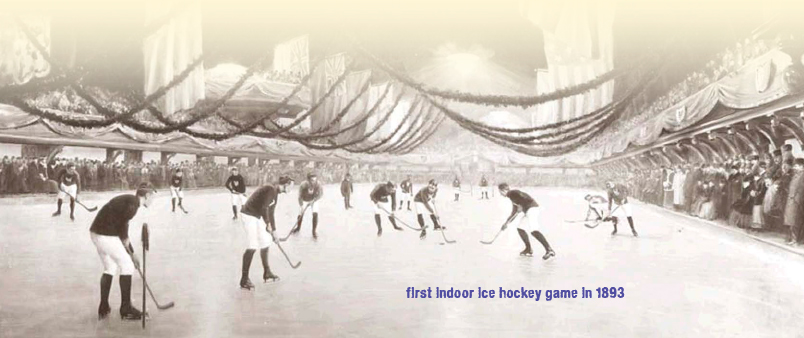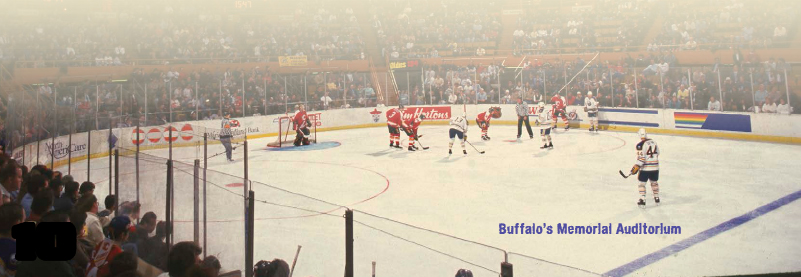
Please visit our website, www.garethstevens.com. For a free color catalog of all our high-quality books, call toll free 1-800-542-2595 or fax 1-877-542-2596.
Library of Congress Cataloging-in-Publication Data
Nagelhout, Ryan.
20 fun facts about hockey / Ryan Nagelhout.
pages cm. (Fun fact file: Sports!)
Includes index.
ISBN 978-1-4824-3978-6 (pbk.)
ISBN 978-1-4824-3979-3 (6 pack)
ISBN 978-1-4824-3980-9 (library binding)
1. HockeyMiscellaneaJuvenile literature. I. Title. II. Title: Twenty fun facts about hockey.
GV847.25.N38 2016
796.962dc23
2015030539
First Edition
Published in 2016 by
Gareth Stevens Publishing
111 East 14th Street, Suite 349
New York, NY 10003
Copyright 2016 Gareth Stevens Publishing
Designer: Sarah Liddell
Editor: Ryan Nagelhout
Photo credits: Cover, p. 1 Andrey Yurlov/Shutterstock.com; p. 5 Pictorial Parade/Staff/Archive Photos/ Getty Images; p. 6 Voyager/Wikimedia Commons; p. 7 Sports Illustrated/Contributor/Sports Illustrated/ Getty Images; p. 8 OZaiachin/Shutterstock.com; p. 9 Andy Devlin/Contributor/National Hockey League/ Getty Images; p. 10 B Wippert/Contributor/Bruce Bennett/Getty Images; p. 11 Bill Smith/Contributor/ National Hockey League/Getty Images; p. 12 Jeff Vinnick/Contributor/National Hockey League/ Getty Images; p. 13 (flag) RabidBadger/Shutterstock.com; p. 13 (jersey) Len Redkoles/Contributor/National Hockey League/Getty Images; pp. 14, 20 B Bennett/Contributor/Bruce Bennett/Getty Images; p. 15 John Iacono/Contributor/Sports Illustrated/Getty Images; p. 16 David E. Klutho/Contributor/Sports Illustrated/ Getty Images; p. 17 Sporting News Archive/Contributor/Sporting News/Getty Images; p. 18 Denis Brodeur/ Contributor/National Hockey League/Getty Images; p. 19 Christian Petersen/Staff/Getty Images Sport/ Getty Images; p. 21 Jim McIsaac/Staff/Getty Images Sport/Getty Images; p. 22 Steve Babineau/Contributor/ National Hockey League/Getty Images; p. 23 Alaney2k/Wikimedia Commons; p. 24 UniversalImagesGroup/ Contributor/Getty Images; p. 25 Jonathan Daniel/Staff/Getty Images Sport/Getty Images; p. 26 Bruce Bennett/Staff/Getty Images Sport/Getty Images; p. 27 S Levy/Contributor/Bruce Bennett/Getty Images; p. 29 Noah Graham/Contributor/National Hockey League/Getty Images.
All rights reserved. No part of this book may be reproduced in any form without permission in writing from the publisher, except by a reviewer.
Printed in the United States of America
CPSIA compliance information: Batch #CW16GS: For further information contact Gareth Stevens, New York, New York at 1-800-542-2595.
Contents
Words in the glossary appear in bold type the first time they are used in the text.
Hockey History
Its easy to see why hockey was once called the coolest game on Earth. You might play roller or floor hockey with your friends, but the game was originally played on frozen ponds and indoor ice rinks. Hockey is fast, fun, and full of interesting facts.
Big shots and even bigger saves highlight a game filled with heroes known as The Great One and The Dominator. Lets lace up our skates and take a shot at some of hockeys wackiest history.
Hockey has some of the most fun nicknames in sports. Did you know Montreals Maurice Richard was called the Rocket when he hit the ice?
Puck Points
FACT 1
The first hockey pucks were frozen cow poo!
The first hockey games were played on ponds outside with whatever could be found. Some other early hockey pucks were made by gluing two pieces of rubber together. These pucks would often split in half when they hit the goalpost!
Hockey pucks are actually frozen before a National Hockey League (NHL) game to help keep them from bouncing on the ice. About a dozen different pucks are used per game.
Whole lacrosse balls were often used by teams until the game started moving indoors. By 1885, most people were using the hockey puck.
FACT 2
The hockey puck has a birthday!
The word puck was used for the first time on February 7, 1876, in an article in the Montreal Gazette. The first pucks were the middle section of lacrosse balls that had been cut into thirds. Todays pucks are made out of vulcanized rubber.
Twigs and Sticks
FACT 3
Hockey sticks used to be called twigs.
The first hockey sticks were made of wood pieces glued together, but todays sticks are made of composite materials, or matter. These materials are strong, but bend and twist easily, which lets players shoot harder.
Old hockey sticks also didnt have curved blades. The curve helps players lift pucks off the ice when they shoot.
FACT 4
Hockey sticks are supposed to bend, but not break.
Sticks are measured by their flex, or the ability to bend when pressure is put on them. On a hard slap shot, the stick hits the ice behind the puck, which lets the stick flex and add more power to the shot.
Composite sticks often break more easily than old wooden sticks. A small crack in a stick can lead to a big break when a hard shot is taken.
Fun at the Rink
FACT 5
Until 1996, not every NHL rink was the same size!
A standard NHL ice rink is an oval 200 feet (61 m) long and 85 feet (26 m) wide. But not all old rinks were that size. Boston Garden, where the Bruins once played, was 191 feet by 83 feet (58 m by 25 m)!
The last nonregulation rink in the NHL was Buffalos Memorial Auditorium, which closed in 1996.
Fans carried the old tradition over from Chicago Stadium to the modern arena built on Madison Avenue in Chicago in 1994. It gets very loud in there during the playoffs!
FACT 6
Fans in Chicago cheer right through the national anthem at the Madhouse on Madison.
During the 1985 Stanley Cup Finals, fans in Edmonton, Alberta, made some noise during The Star-Spangled Banner. Chicago fans responded by cheering loudly while the organ played the song before Game 3. Chicago won the game, and now fans cheer through it at every home game.
Oh, Canada
FACT 7
Next page


























